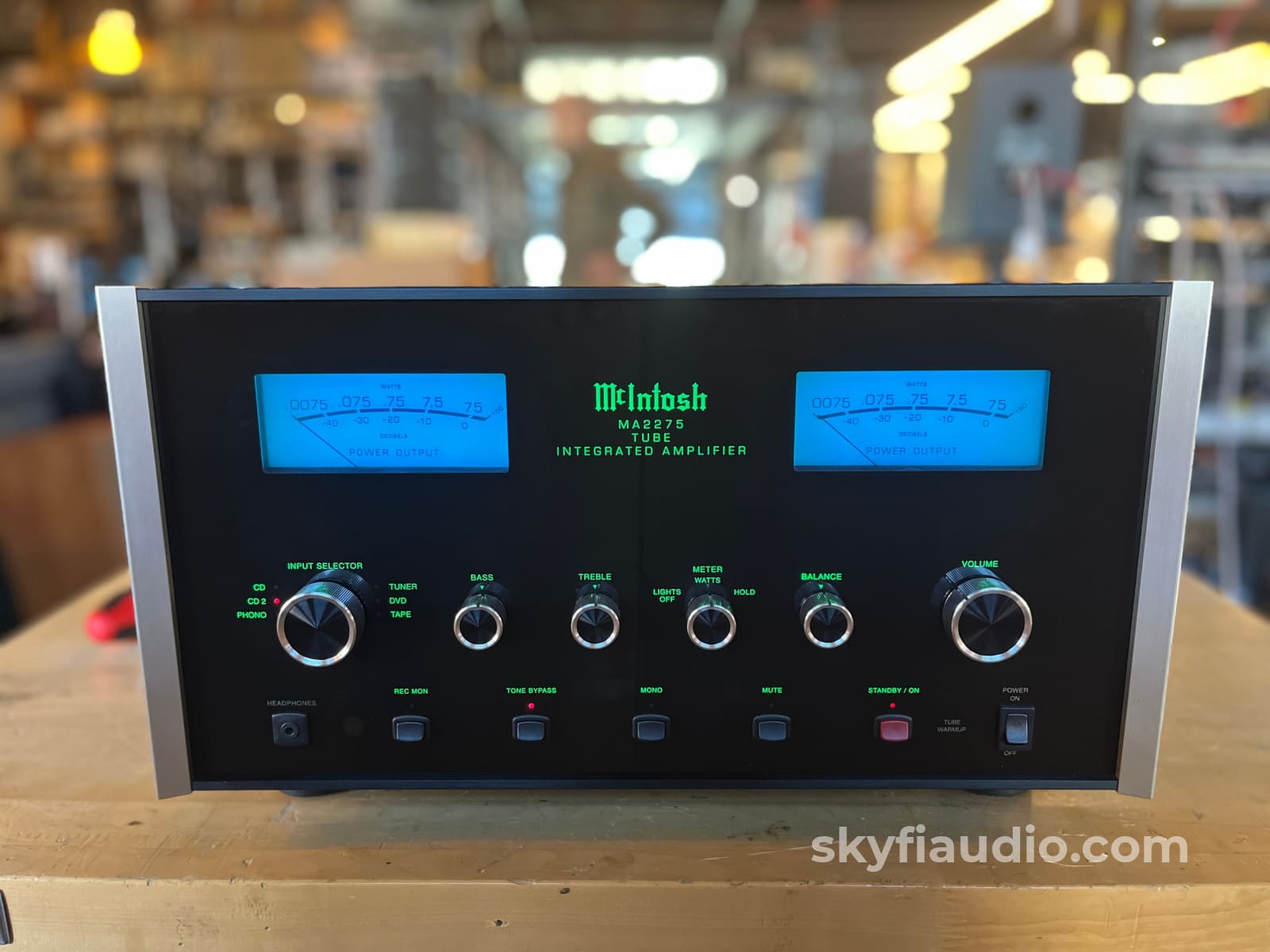
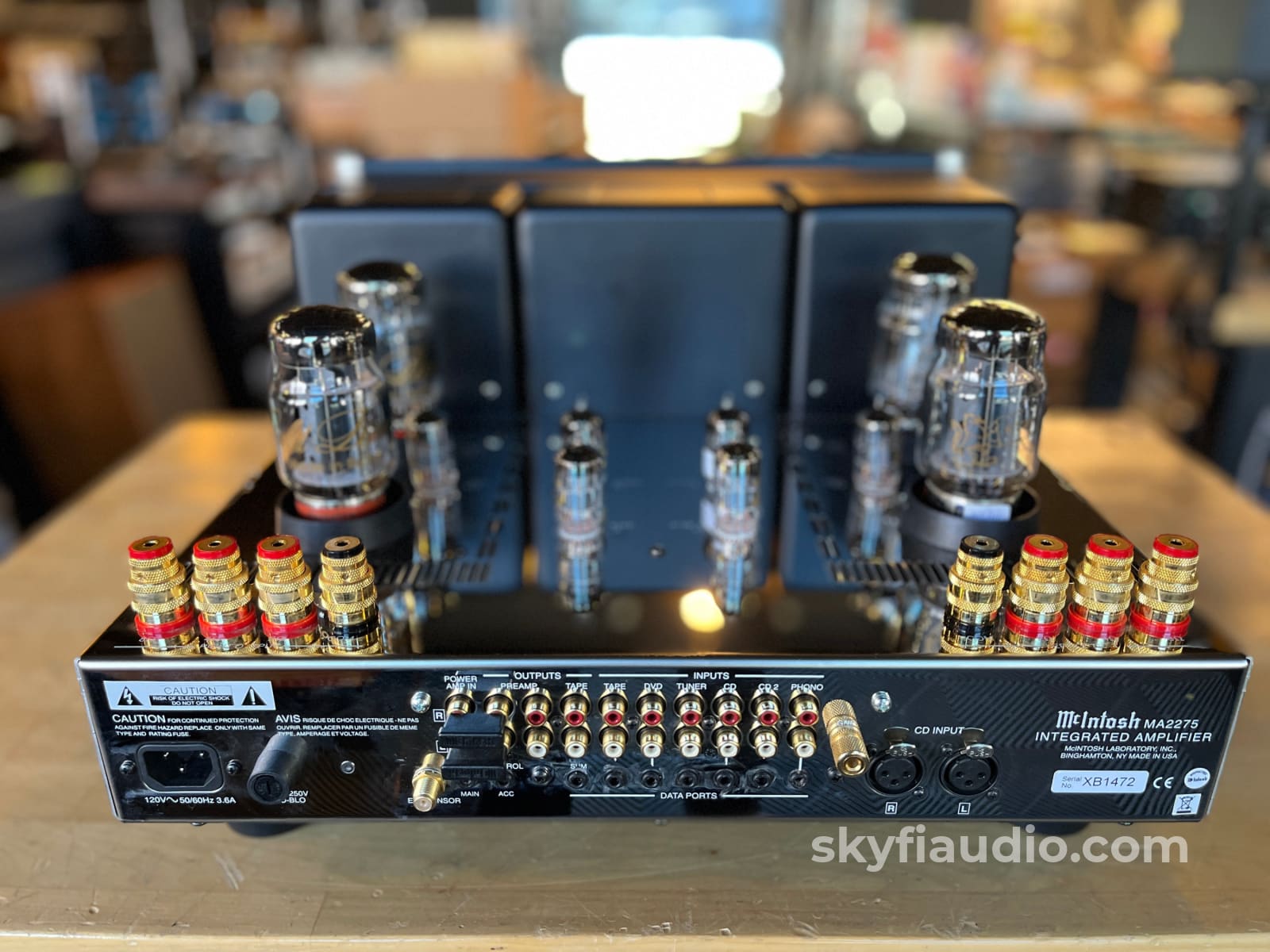
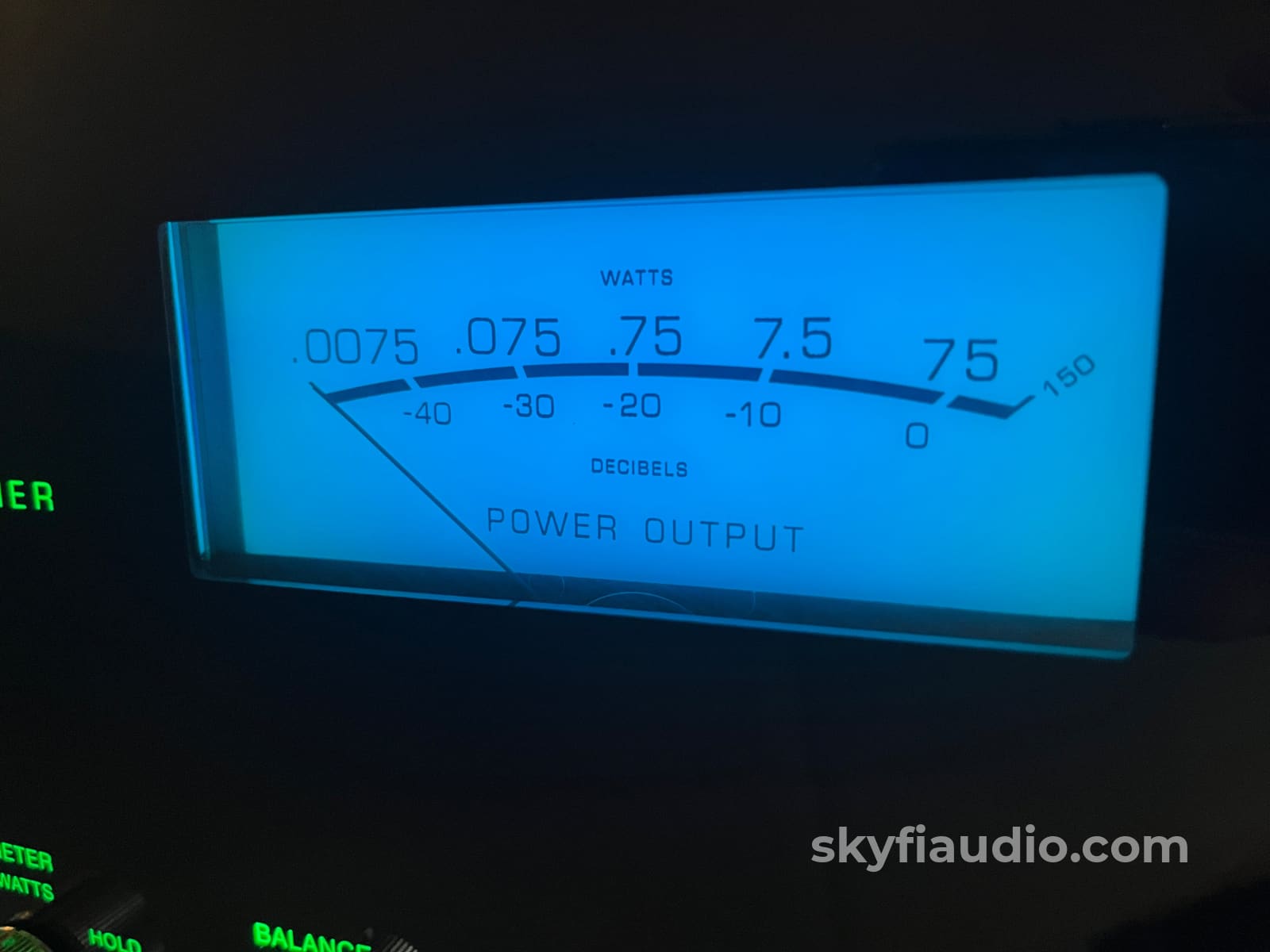
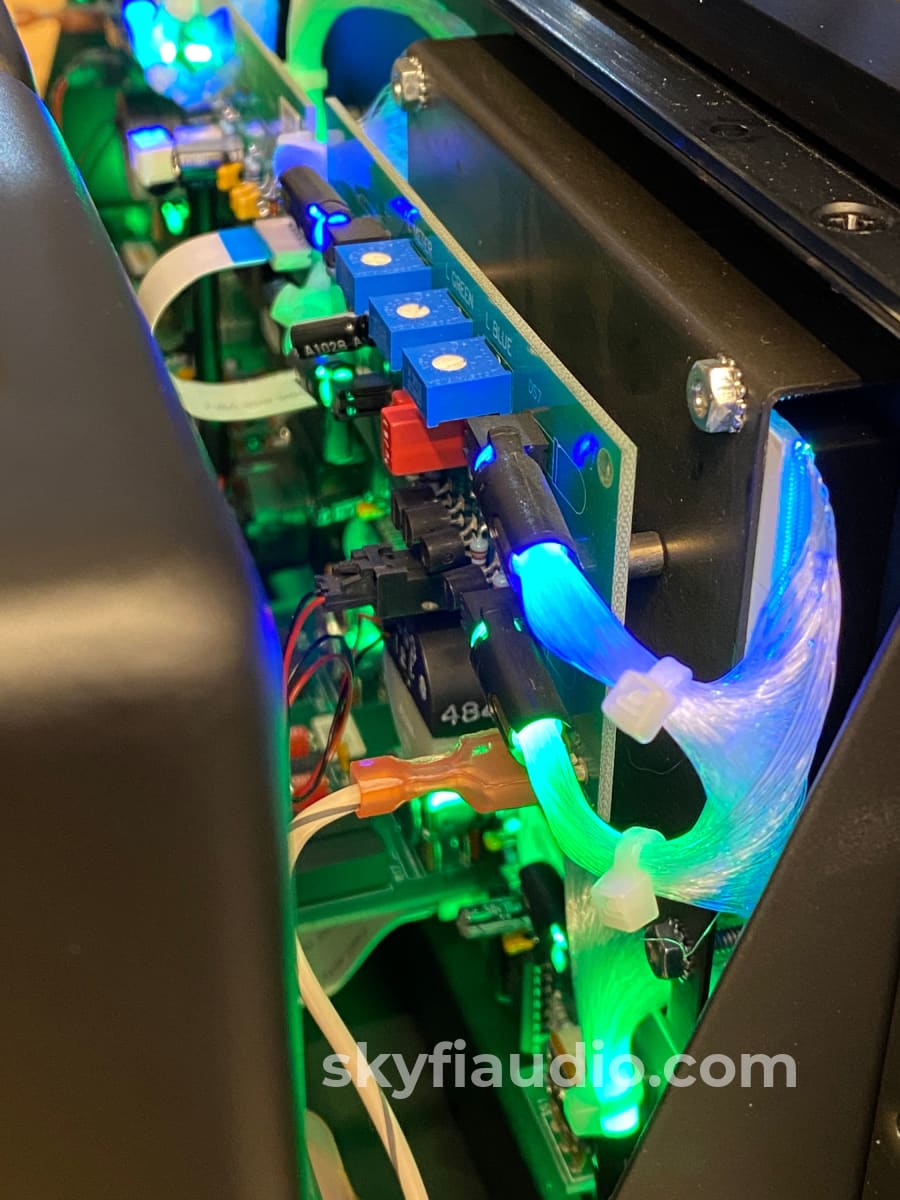
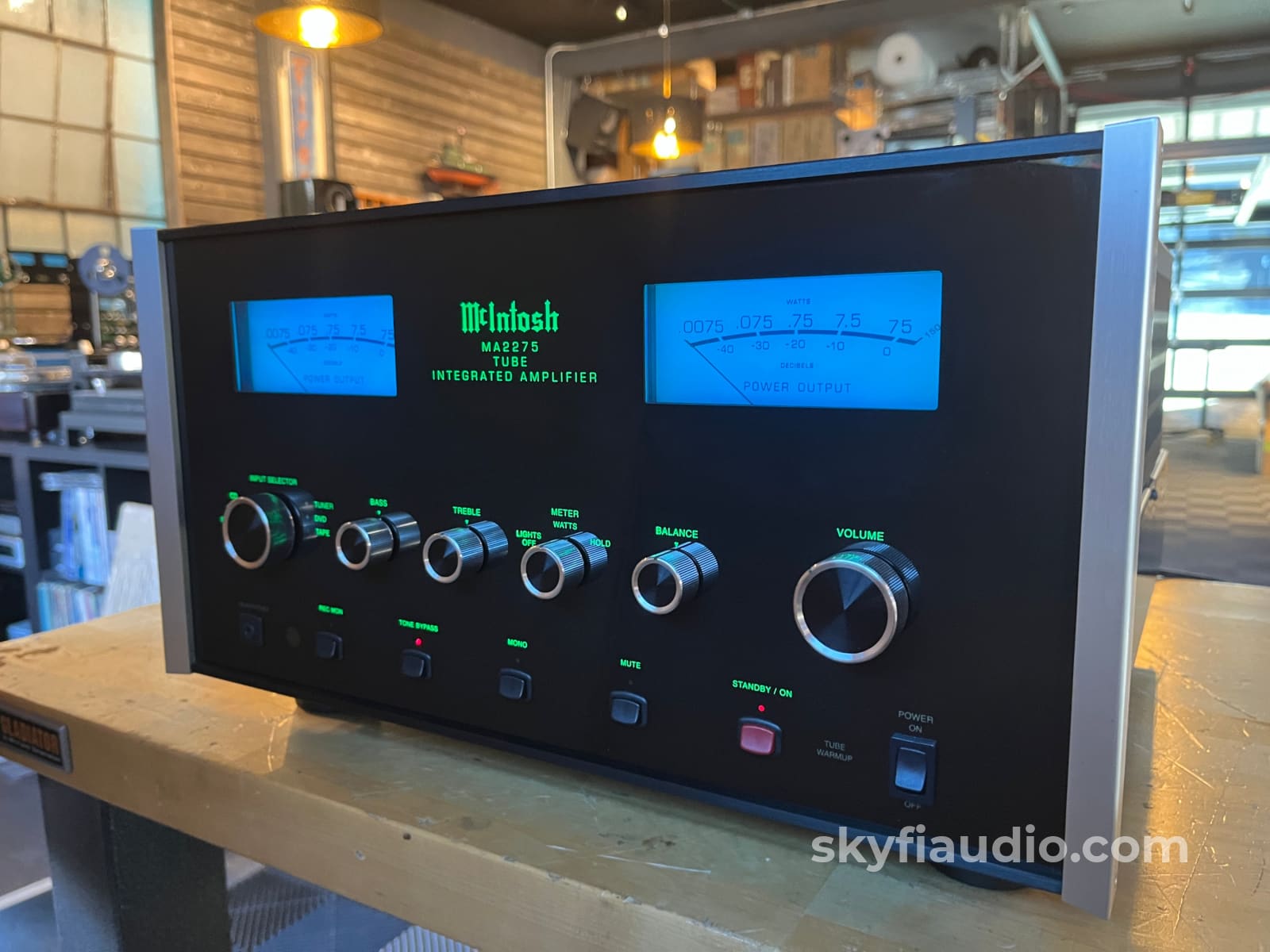
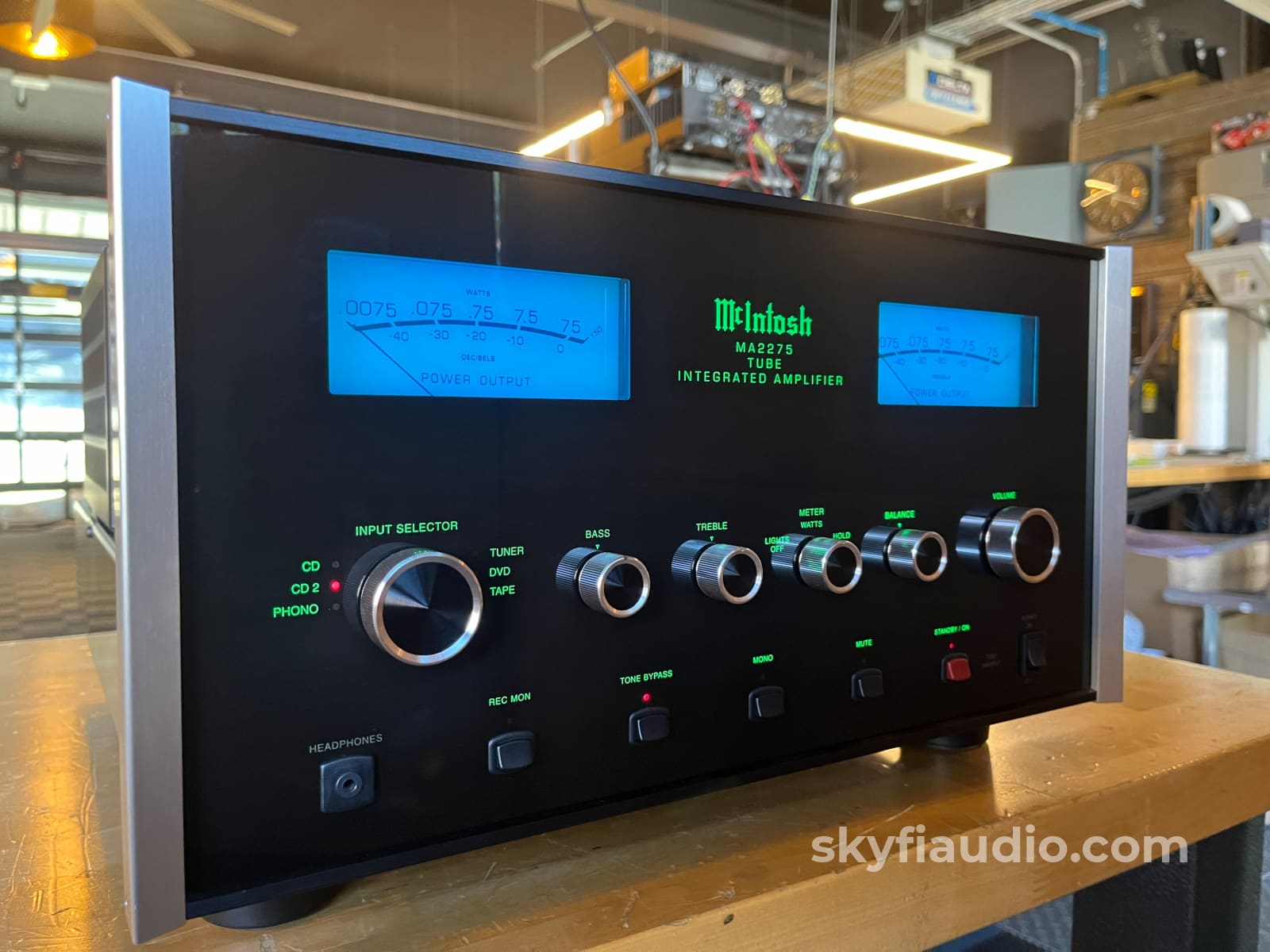
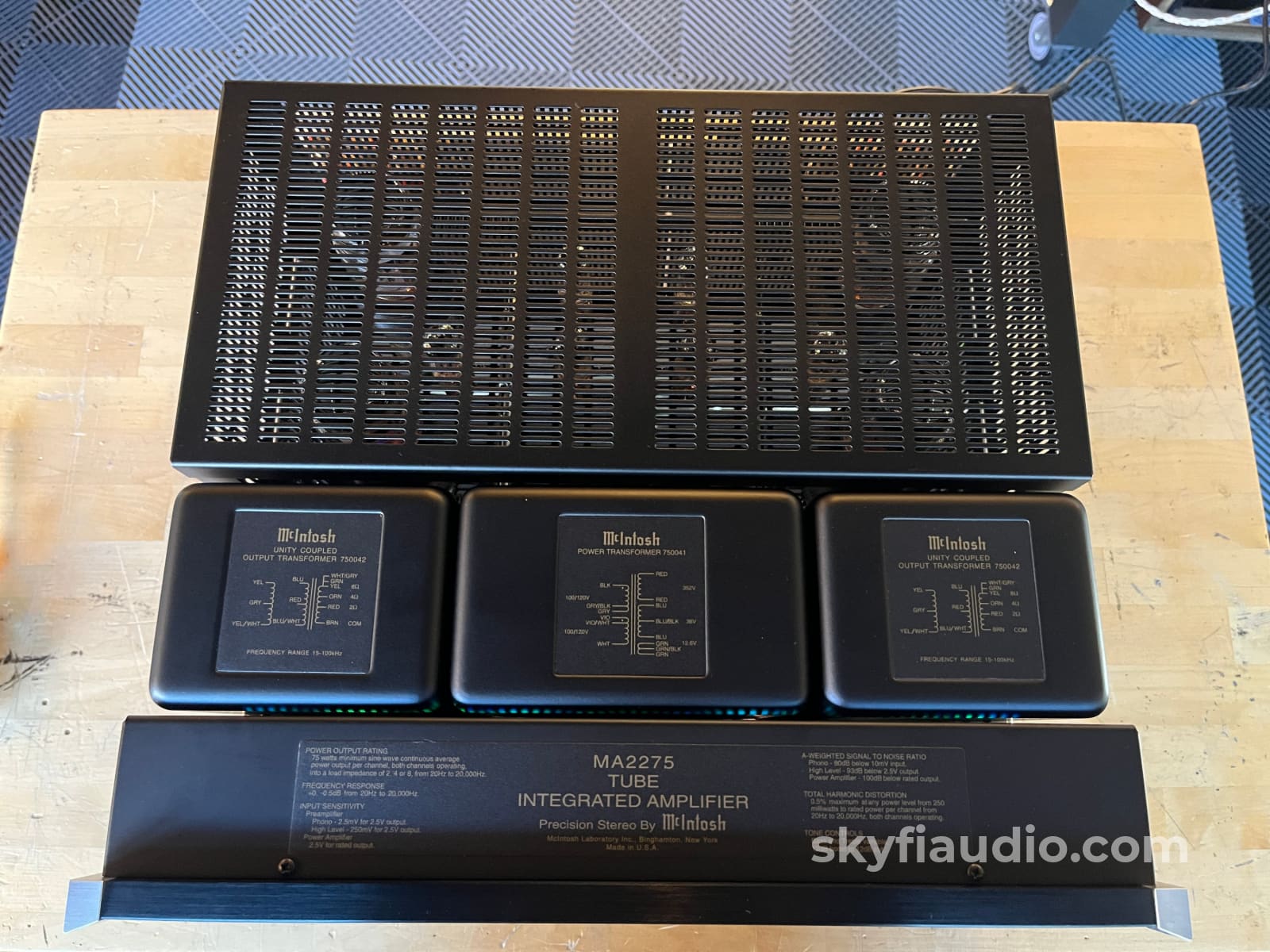

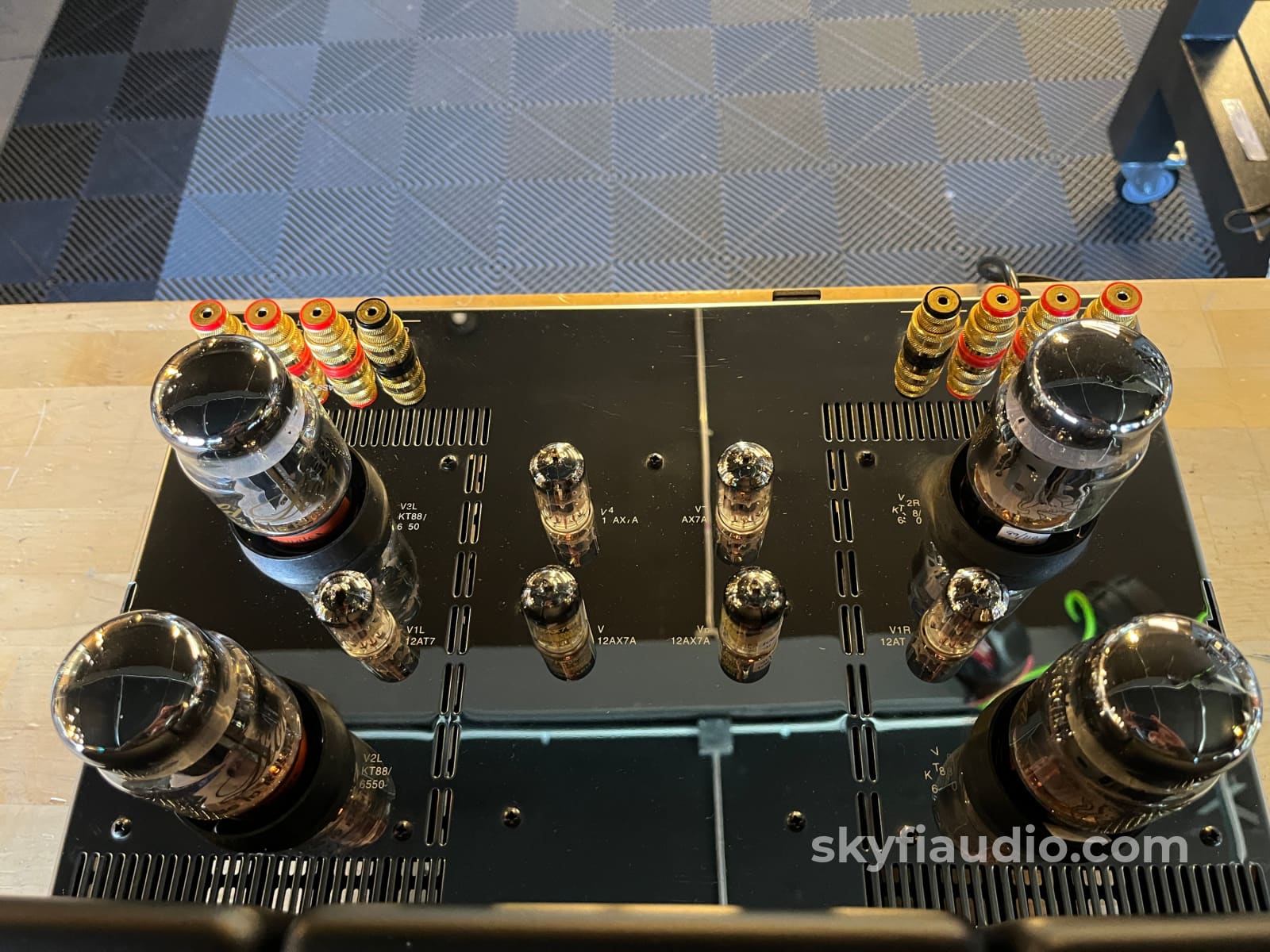

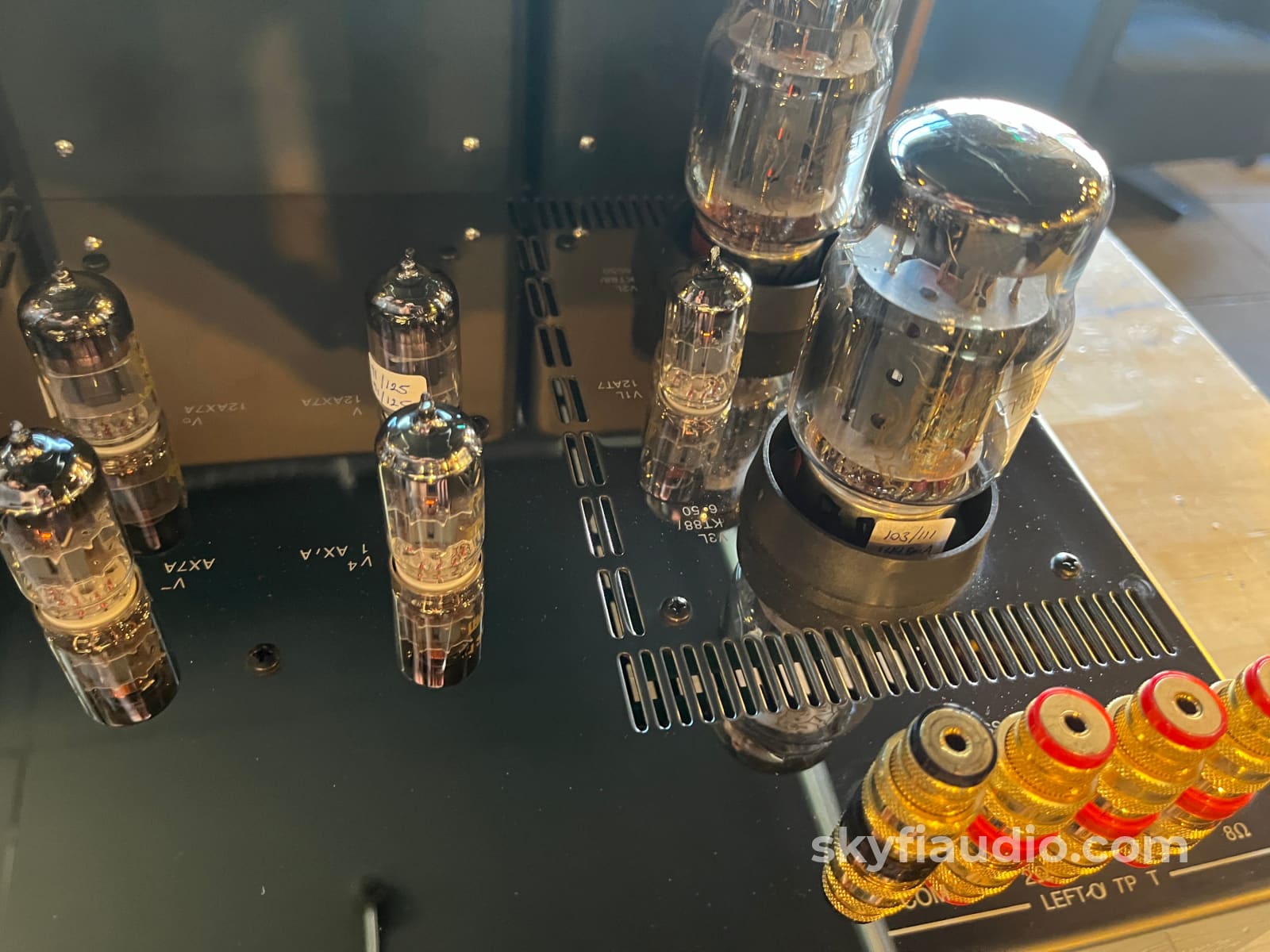
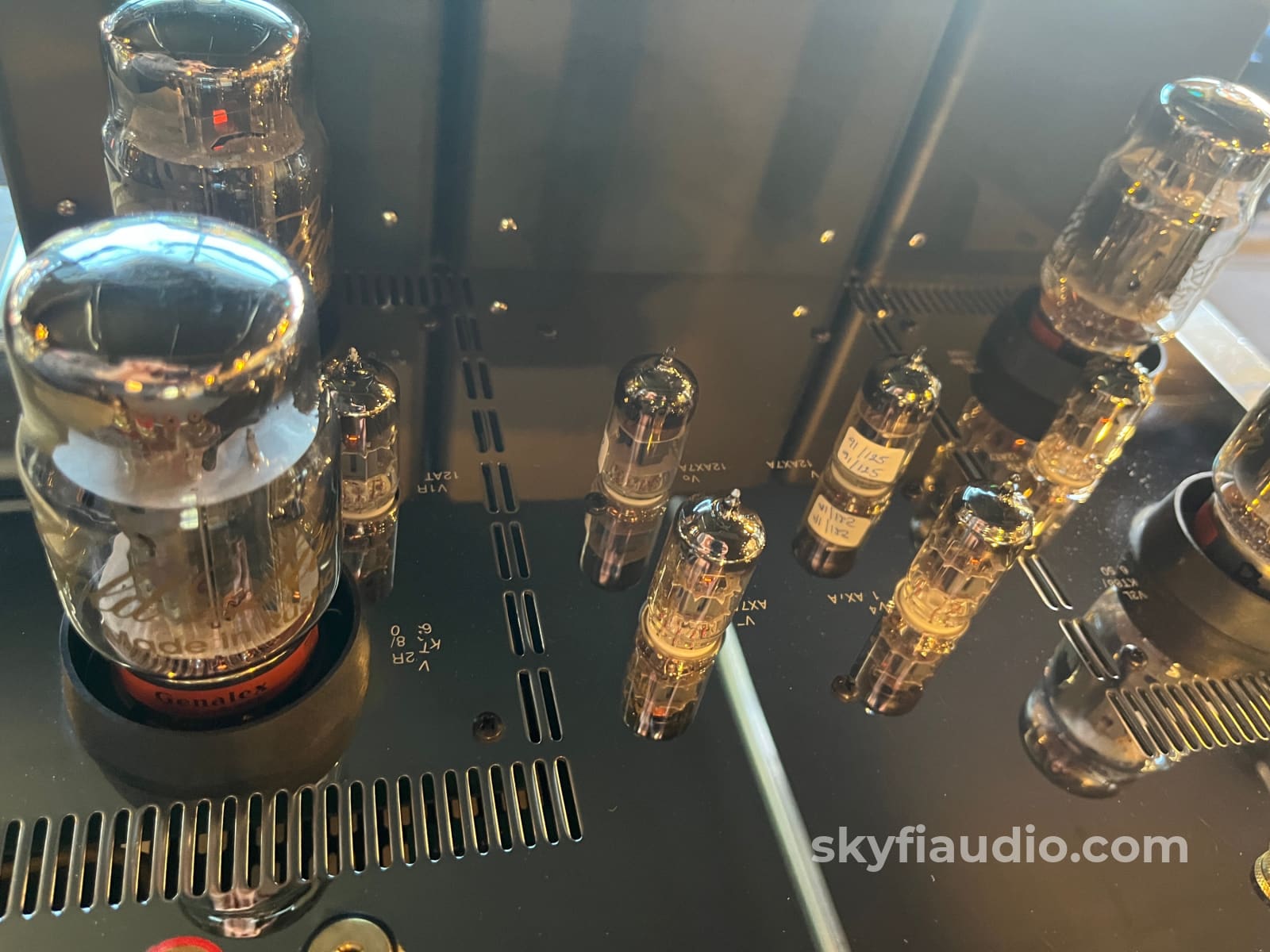
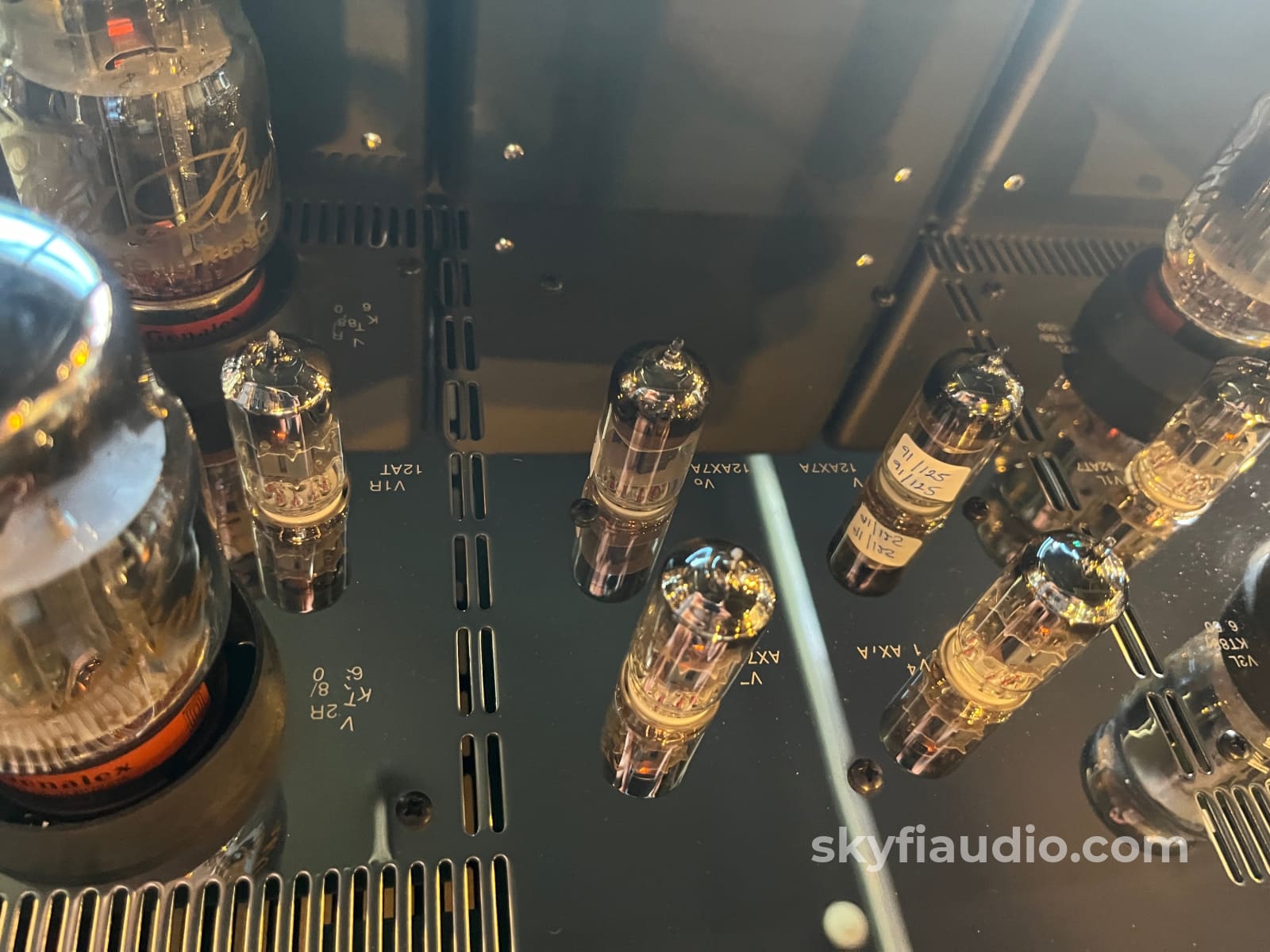

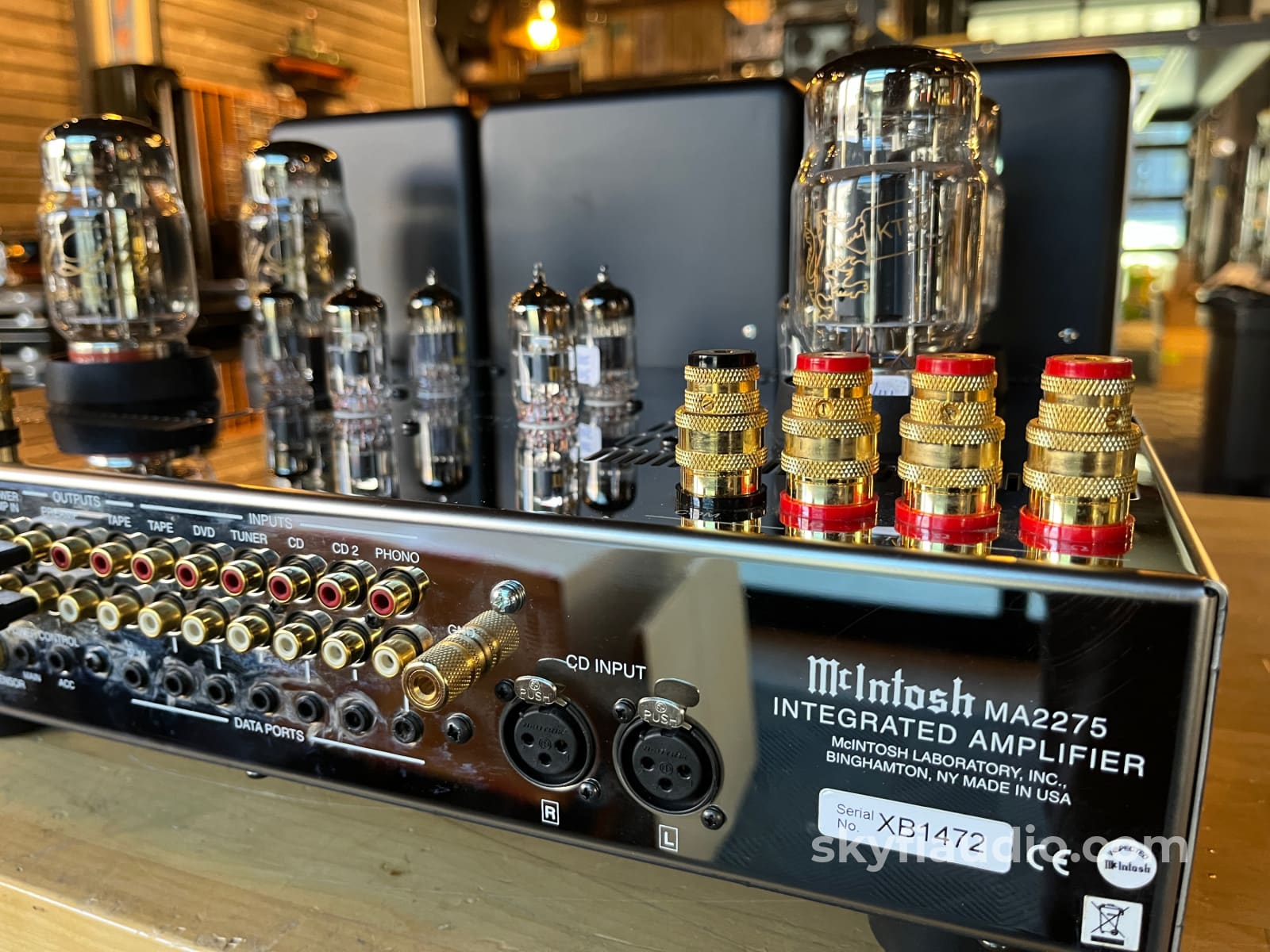


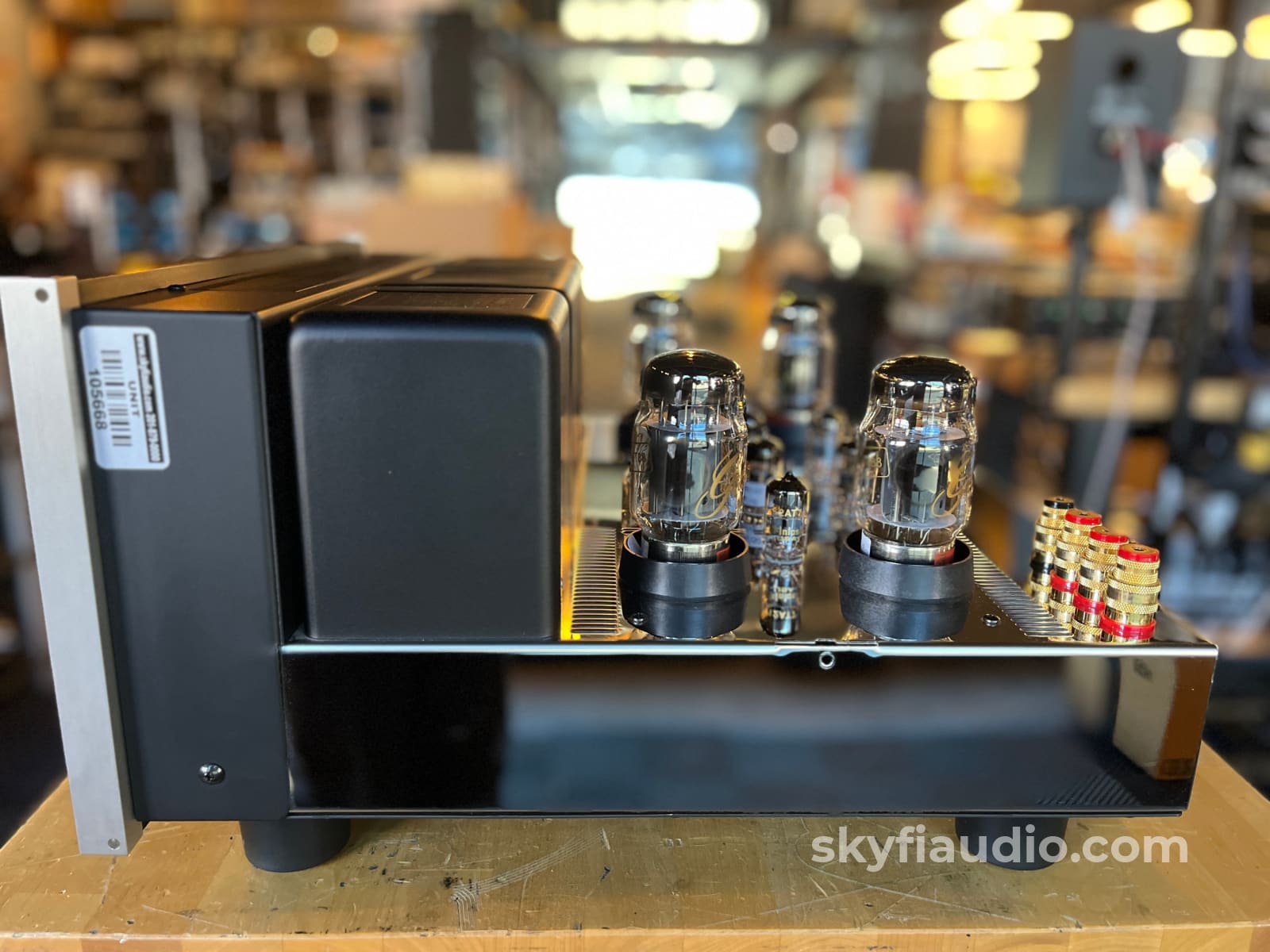
McIntosh MA2275 Integrated Tube Amplifier - Super Rare
Free Shipping on Most Electronics - Excludes Speakers and Items Requiring Freight - Contiguous U.S. Only
Pickup currently unavailable at SkyFi 479

McIntosh MA2275 Integrated Tube Amplifier - Super Rare
SkyFi 479
479 South Broad Street
Glen Rock NJ 07452
United States
General:
If you are looking for one the coolest modern McIntosh integrated amplifiers this is up there.
You see, the MA2275 is a sort of rare bird in the world of McIntosh for the following reasons.
1) Low production numbers and scarcity. At the time of writing this listing there are zero other units I could find listed for sale anywhere. Most of the MA2275's were sold in the Asian market where large integrated tube units were marketable.
2) This is the only ALL TUBE integrated McIntosh ever produced in its long history. Sure there are plenty of integrated models, but they are mostly solid state or hybrid solid state and tube designs.
3) The MA2275 uses tubes for ALL stages, not just the output. Most integrated tube amps resort to transistors for the preamp stage to keep costs down. Even the phono stage is tubed!
4) Great reviews, check this one out for example.
5) The MA2275 is based on the legendary MC275 amplifier with the addition of 2 ohm speaker taps, making it capable of driving even the most difficult loads.
6)The MA2275 also features the famous McIntosh fiber-optic lighting on the VU meters giving them very even glow, plus you'll never have to worry about replacing any bulbs.
If you're a collector or someone that must have a fully tubed integrated, the MA2275 might be right for you.
This example is in fantastic condition and only has some of the top silkscreen tube lettering/numbers lifted (cleaned off) from age. It will include an official MA2275 McIntosh shipping carton, printed copy of the original manual, and the original remote.
SkyFi Cosmetic Notes:
This era of McIntosh product uses a white silkscreen lettering on the chassis that easily falls off during routine cleaning. Many of the identifying text for the tubes is no longer legible, but this information can be easily found in the owner's manual if ever needed.
SkyFi Technical Notes:
This MA2275 was fitted with a fresh set of McIntosh silkscreened 12AX7 and 12AT7 driver tubes. The output tubes are two matched pairs of strong testing Gold Lion KT88's.
Brand Background:
McIntosh Laboratory is an American manufacturer of handcrafted high-end audio equipment based in Binghamton, New York. The company was founded in 1949 by Frank McIntosh. The company designs and produces audio amplifiers, stereo tuners and other consumer electronics products.
Ownership:
Single Owner
Connections:
RCA, XLR and five way speaker binding posts
General Sound:
Big beautiful musical sound with little fatigue.
Cosmetic Condition:
8/10 = Very Good. Excellent front faceplate, one minor flaw on chassis side or top. See our detailed rating description here.
Working Condition:
Working perfectly and tested in our lab and listening room.
Included:
Exactly as pictured and described above.
Packing:
Original Manufacturers Packing
Standout Features Include:
• Power Output
The MA2275 has two separate power amplifier channels, each capable of 75 watts into 2, 4 or 8 ohm Loudspeakers.
• Bifilar Wound Transformers and Output Circuit
The Power Output Circuitry utilizes the famous McIntosh Patented Unity Coupled Circuit with a Bifilar Wound Output Transformer for low distortion, extended frequency response and cool operating output tubes.
• Balanced and Unbalanced Inputs
The MA2275 has five Inputs for high level program sources and one Phono Input for a Moving Magnet Cartridge.
• Tone Control Bypass
The Bass and Treble Control Circuit Elements can be removed from the Signal Path.
• Gold Plated Connectors and Tube Socket Contacts
Gold Plated Input Jacks and Output Binding Posts provide trouble free connections. Ceramic tube sockets with gold plated contacts provide protection from atmospheric contamination. Output Tube Sockets include Air-Pipe cooling at their bases.
• Super Mirror Chassis Finish
The Stainless Steel Chassis with Super Mirror Finish ensures the pristine beauty of the MA2275 will be retained for many years.
Specifications
Power Output
Minimum sine wave continuous average power output per channel, both channels operating is:
75 watts into 2 ohm load
75 watts into 4 ohm load
75 watts into 8 ohm load
Rated Power Band
20Hz to 20,000Hz
Total Harmonic Distortion
Maximum Total Harmonic Distortion at any power level from 250 milliwatts to rated power output is: 0.5% for 2, 4 or 8 ohm loads
Frequency Response
+0, -0.5dB from 20Hz to 20,000Hz
+0, -3dB from 10Hz to 50,000Hz
Sensitivity
Phono: 2.5mV for 2.5V rated output (0.5mV IHF)
High Level: 250mV for 2.5V rated output (50mV IHF)
Power Amplifier Input: 2.5V for rated output
A-Weighted Signal To Noise Ratio
Phono Input: 80dB below 10mV input
High Level: 93dB below rated output
Power Amplifier: 100dB below rated output
Intermodulation Distortion
Maximum Intermodulation Distortion if instantaneous peak output does not exceed twice the rated output, for any combination of frequencies from 20Hz to 20,000Hz is: 0.5% for 2, 4 or 8 ohm loads
Input Impedance
Phono: 47K ohms, 65pF
High: Level, 22K ohms
Maximum Input Signal
Phono: 90mV
High Level: 8V
Preamplifier Maximum Voltage Output
Phono: 8V
High Level: 8V
Main Out: 8V at preamp output
Voltage Gain
High Level to Tape: 0dB
High Level to Main: 20dB
Wide Band Damping Factor
Greater than 18
Power Requirements
US, 120 Volts, 50/60Hz at 3.6 amps
Preamplifier Tube Complement
2 x 12AX7A Phono Circuitry
2 x 12AX7A High Level Circuitry
Power Amplifier Tube Complement
2 x 12AT7
4 x KT88/6550
Dimensions:
Width is 17-3/4 inches (45.09cm)
Height is 10-1/8 inches (25.72cm) including feet
Depth is 18-3/4 inches (47.63cm) including the Front Panel and Knobs
Weight:
77 lbs.
Link to Manual:
Click Here
Recommended Cables:
Kimber Kable - RCA Interconnects - Better
Kimber Kable - RCA Interconnects - Best
Kimber Kable - Phono Interconnects
Kimber Kable - BALANCED XLR Connectors - Better
Kimber Kable - BALANCED XLR Connectors - Best
Kimber Kable - Speaker Cables - Better
Kimber Summit Series Monocle XL Speaker Cables (PAIR) - Best
Kimber Kable - Power Cords - Better
Kimber Kable - Power Cords - Best
Testing Process:
We start with a visual inspection of all internal components to make sure that there are no signs of heat stress or damage. Capacitors are checked for telltale signs of predictive failure including bulging, shrunken wrappers, or physical leakage. We also inspect the PCBs for discoloration from resistors or transistors that may have been running hot. On vintage units we often spot check select capacitors for value and ESR.
If the device has the ability to decouple the preamplifier from the power amplifier, we remove the jumpers and independently test each section. If the device cannot be decoupled, we assess the electronic condition of the piece by analyzing the speaker level output only.
We start by connecting the "Pre-Out" jacks of the integrated to a Sencore PA81 Power Analyzer which simulates real world loading conditions and gives us an oscilloscope interface. The first order of business is checking that the volume control works smoothly throughout its entire range with acceptable channel balance. This is accomplished by feeding a 1 KHz sine wave into one of the preamp’s line level inputs while monitoring the preamp’s output on an oscilloscope.
We then switch to a 1 KHz square wave to test the tone controls, loudness function, and filters where applicable. During this step we are watching for equal alteration of the test signal by both channels. This also helps us identify dirty controls that will need treatment.
Once the basic line stage functions are verified, we test each input individually. This is especially important for devices that use relays to select their sources.
If the preamp section is equipped with a phono stage we test that as well. We use an inverse RIAA filter which allows us to feed a reference test signal into the phono input with the proper RIAA equalization and level. A square wave or sine sweep is used to verify that the device’s phono stage is faithfully reproducing the RIAA curve.
Next we test the power amplifier section by connecting the integrated amplifier speaker outputs to a Sencore PA81 Power Analyzer which acts as a dummy load, DC offset monitor, and oscilloscope interface. We start with a low level 1 KHz test signal at the "Main In” jacks and slowly increase its amplitude while monitoring the output on an oscilloscope for signs of noise, clipping, distortion, or improper channel balance. We continue increasing the signal level until the amplifier reaches clipping.
At this point we take an output power measurement and compare it to the spec sheet of the amplifier to verify proper performance. We finish off the bench evaluation with a 1 KHz square wave check and a 20 Hz to 20 KHz sine sweep to assess the amplifier’s frequency response characteristics.
This battery of tests will usually reveal if the amplifier has any issues that need further attention.
If the preamp and power amp both pass these tests, we reconnect the sections and verify that the preamp section can drive the power amp to rated power with a 1KHz tone on one of the line level inputs.
Before the device leaves the bench, we perform a listening test with actual music using a variety of preferred test tracks. Our benches are outfitted with familiar monitor speakers which help us identify inconsistencies that will not always show up on our test gear. The main things that we are listening for are hum or noise with no signal present, proper center image, clicks, pops, or any other obvious undesirable audio characteristics.
If the unit passes all of these tests it moves to our long term testing rig where we simulate real word operating conditions for 6-8 hours minimum. This allows us to monitor the unit for signs of thermal runaway or intermittent issues that only crop up when the unit has fully come up to temperature.
Choose options


















